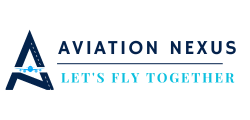The Directorate General of Civil Aviation (DGCA) has announced that the implementation of e-licenses for pilots in India is in its final stage, a move that will streamline and modernize the licensing process for aviation professionals. The initiative is part of the broader digital transformation in the aviation sector, and it is expected to bring significant benefits to pilots and other aviation stakeholders by simplifying documentation and reducing processing times. The new system will also be linked to the International Civil Aviation Organization (ICAO) platform, ensuring that India’s licensing standards are in line with global practices.
E-licenses, once fully implemented, will replace the traditional paper-based system, offering greater convenience and transparency. Pilots will be able to apply for, renew, and manage their licenses online through a dedicated portal. This digital shift is particularly important in addressing administrative delays that often hamper the licensing process, thus providing a smoother experience for both pilots and regulatory authorities.
Linking India’s e-license system to ICAO will have multiple advantages. Firstly, it ensures that Indian pilots meet international standards, facilitating smoother recognition of Indian licenses by foreign aviation authorities. This will enhance employment opportunities for Indian pilots in global markets, contributing to job creation and career growth in the aviation sector. Additionally, the integration with ICAO will improve the regulatory oversight of pilot qualifications, enhancing flight safety standards in Indian aviation.
From a broader perspective, this transition to e-licenses aligns with the government’s push towards digital governance and the “Digital India” initiative. The DGCA has emphasized that this modernization effort will significantly aid in reducing bureaucratic hurdles and improving the efficiency of the aviation sector. For pilots, this change means faster processing, reduced paperwork, and an easier way to keep their qualifications up to date.
The introduction of e-licenses is also a crucial step towards strengthening the aviation job market in India. As global air travel recovers and expands post-pandemic, the demand for skilled pilots is expected to rise. The adoption of an e-license system will facilitate quicker approvals and certification for aspiring and current pilots, making it easier for them to enter or advance in their careers. By improving the licensing process, the DGCA is directly aiding job creation and helping address the growing demand for pilots, both domestically and internationally.
In conclusion, the implementation of e-licenses for pilots is a major milestone in India’s aviation sector. By linking the system to ICAO standards, the DGCA is ensuring global recognition for Indian pilots and contributing to job growth in the industry. This digital transformation will make the licensing process more efficient, transparent, and aligned with international best practices, benefiting both aviation professionals and the wider industry.

